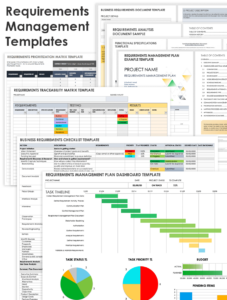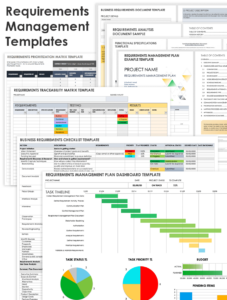A requirements traceability matrix (RTM) is an essential tool for managing and tracking software development requirements. It provides a structured way to link requirements to the design, implementation, and testing phases of a project. A well-maintained RTM can help to ensure that all requirements are met and that the project is delivered on time and within budget.
There are many different ways to create an RTM, but one common approach is to use a template. A template can provide a starting point for your RTM and help to ensure that it is complete and accurate.
Understanding the Components of a Sample Requirements Traceability Matrix Template
A sample requirements traceability matrix template typically includes the following components:
- Requirement ID: This column identifies each requirement by a unique ID.
- Requirement Description: This column provides a brief description of each requirement.
- Source: This column identifies the source of each requirement, such as a user story, a system specification, or a business requirement.
- Design: This column links each requirement to the design elements that implement it.
- Implementation: This column links each requirement to the code elements that implement it.
- Test: This column links each requirement to the test cases that verify it.
- Status: This column indicates the status of each requirement, such as “met,” “not met,” or “in progress.”
The specific components of a requirements traceability matrix template may vary depending on the needs of the project. However, the basic structure of the matrix will remain the same.
Benefits of Using a Sample Requirements Traceability Matrix Template
There are many benefits to using a sample requirements traceability matrix template, including:
- Improved traceability: A requirements traceability matrix helps to ensure that all requirements are traced through the development process. This makes it easier to track the progress of requirements and to identify any gaps in the implementation.
- Reduced risk: A requirements traceability matrix can help to reduce the risk of defects by ensuring that all requirements are met. This can lead to a more reliable and stable product.
- Improved communication: A requirements traceability matrix can help to improve communication between stakeholders by providing a common understanding of the project’s requirements.
- Reduced time and cost: A requirements traceability matrix can help to reduce the time and cost of development by identifying and resolving issues early in the process.
Conclusion
A requirements traceability matrix is an essential tool for managing and tracking software development requirements. A sample requirements traceability matrix template can provide a starting point for your RTM and help to ensure that it is complete and accurate. By using a sample RTM template, you can improve traceability, reduce risk, improve communication, and reduce time and cost.
Ultimately, a well-maintained requirements traceability matrix can help you to deliver a high-quality product that meets the needs of your stakeholders.


